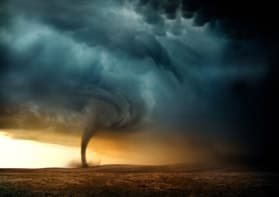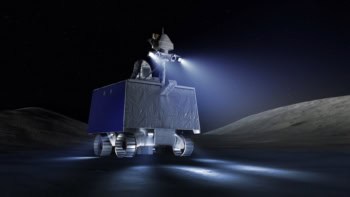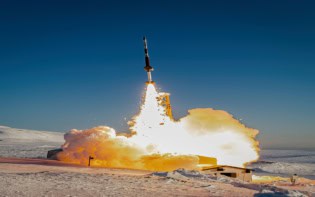
A long-standing debate about what lies at the heart of neutron stars might soon be cleared up, if a new analysis reconciling observational data and theory is vindicated. The latest research, carried out by physicists in Europe and the US, concludes that massive neutron stars are likely to have free quarks in their core rather than being entirely composed of neutrons and other non-fundamental particles. If such extremely dense cores exist, the researchers say that their presence may leave telltale traces in gravitational-wave data from merging neutron stars.
Quarks are normally confined inside protons and neutrons, but they can exist as individual particles if the energy density is high enough. Scientists know this because researchers working on experiments at the CERN laboratory in Switzerland and the Brookhaven National Laboratory in the US have collided heavy ions to generate what is known as a quark-gluon plasma – a “soup” of free quarks and strong force-carrying gluons that is thought to have existed for a few milliseconds after the Big Bang.
It is possible that quarks could also break free from their confined states within the cores of neutron stars. These extremely dense objects form when giant stars collapse and shed most of their material in a supernova explosion. Physicists are confident that neutron stars contain a variety of elements in their outer layers and individual neutrons further in. But they are not sure what exists in the core, and whether neutrons remain intact or break down into their constituent quarks and gluons.
Although energy densities in the core are comparable to those generated by heavy-ion collisions, the “quark matter” that would be produced is quite different from the quark-gluon plasma recreated in laboratories – cooler, but far more dense. Unfortunately, the computational scheme used to simulate quark-gluon plasma, known as lattice quantum chromodynamics (lattice QCD), is unable to model the cold, matter-heavy interiors of neutron stars.
Model-independent analysis
To get around this problem, Eemeli Annala of the University of Helsinki in Finland and colleagues carried out a model-independent analysis of astrophysical data and theoretical calculations. In a paper published in Nature Physics, they point out that nuclear theory can describe fairly precisely how the pressure experienced by protons, neutrons and other quark-containing hadrons varies with energy density in the relatively un-dense environment of a neutron star’s crust. Similarly, they say, QCD can be used to calculate this pressure variation – known as an equation of state – at very high densities.
The real challenge is to work out what goes on between these two extremes, since it is here that neutron-star cores lie. Annala and colleagues took the approach of plotting the variation of a vast ensemble of functions used to represent a neutron star’s equation of state across the full range of energy densities. They tried to be as unbiased as possible in selecting the functions, varying only the maximum speed of sound through the neutron-star matter and anchoring the plots using two empirical constraints: that neutron stars weigh as much as 1.97 solar masses; and that the tidal distortion of a 1.4-solar mass neutron star matches observed values.
The researchers found that their modelled equations of state agreed fairly well with those of standard hadronic theory for lower-mass neutron stars – confirming, they say, that the gravitational fields in these bodies are not high enough to rip neutrons and protons apart. In the most massive neutron stars, however, they found very little agreement between the two sets of modelled data. As such, they conclude that quark cores in massive neutron stars should be considered “the standard scenario, not an exotic alternative”.

Gravitational waves from neutron-star mergers could reveal quark-gluon plasma
As group member Aleksi Kurkela of the CERN laboratory in Switzerland explains, the very few points that do agree would require sound to zip through neutron stars at velocities of at least 90% the speed of light. But he argues that this is very unlikely, simply because scientists know of no physical system that could support such speeds. “Having matter with such a high speed of sound would be truly remarkable,” he says.
Indeed, Kurkela adds that more typical speeds imply that the quark cores are relatively large. By stipulating that sound waves travel no quicker than about half the speed of light, he and his colleagues predict that a 24-km diameter neutron star would have a quark core some 13 km across.
Confirmation still needed
The researchers reckon that their predictions could be put to the test. Shock waves reflecting off the edge of a very dense quark-matter core could, they argue, leave an imprint in the gravitational waves generated when neutron stars merge.
However, not everyone is convinced. James Lattimer, an astrophysicist at Stony Brook University in the US, thinks it likely that quark matter exists inside massive neutron stars. But he maintains that the study relies on too much interpolation – some two orders of magnitude in energy density – to draw firm conclusions. He also notes that the physical conditions assumed by the authors to yield quark-matter cores have been shown by other researchers to produce cores containing only hadronic matter.
Laura Paulucci, an astrophysicist at the Federal University of ABC in Brazil, largely agrees. She argues that while the latest research indicates that quark cores are likely to exist, it falls short of providing direct evidence. “It is difficult to say how long it will take until we have a clearer picture and a definite answer,” she says. “I hope it is not long.”



